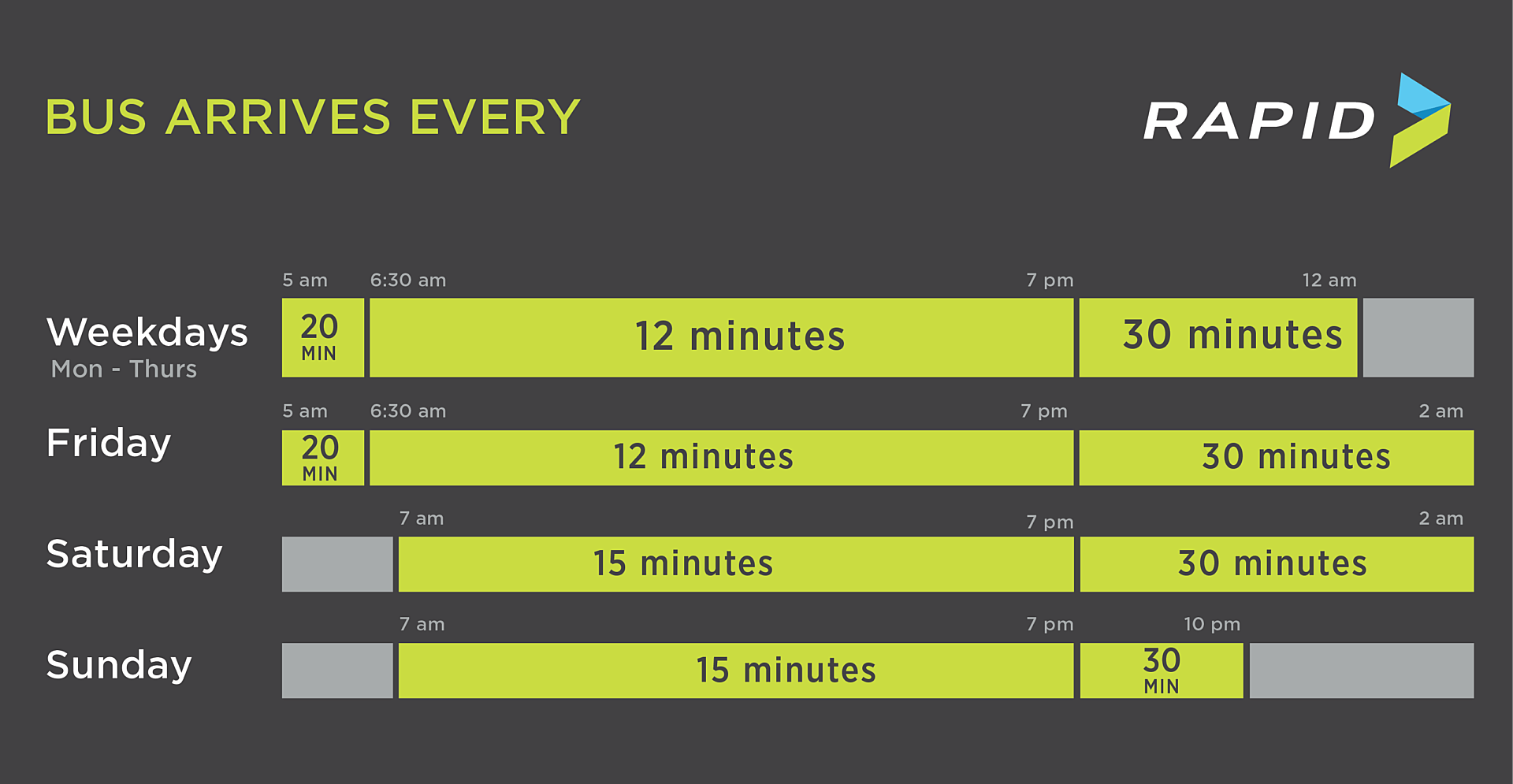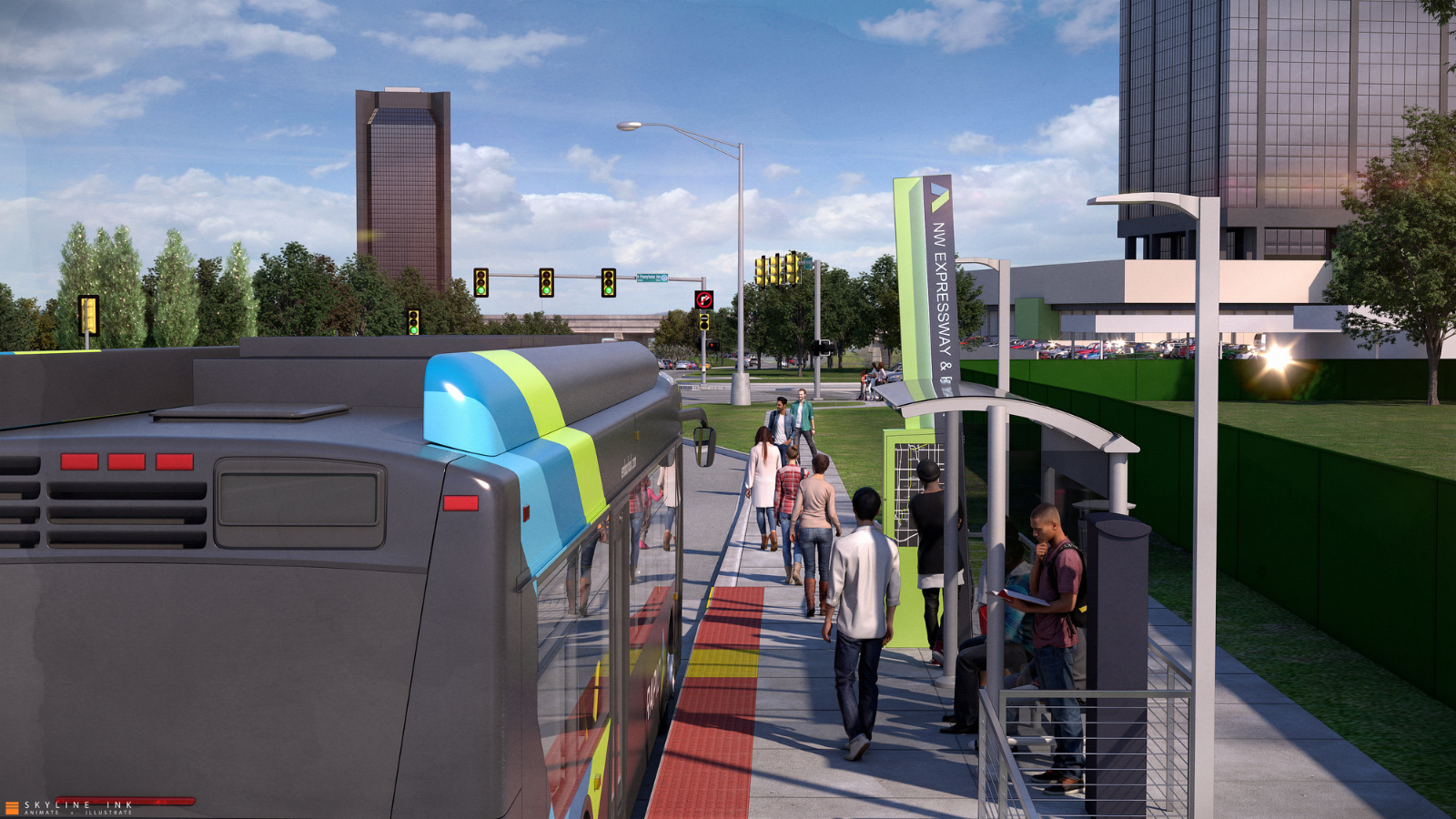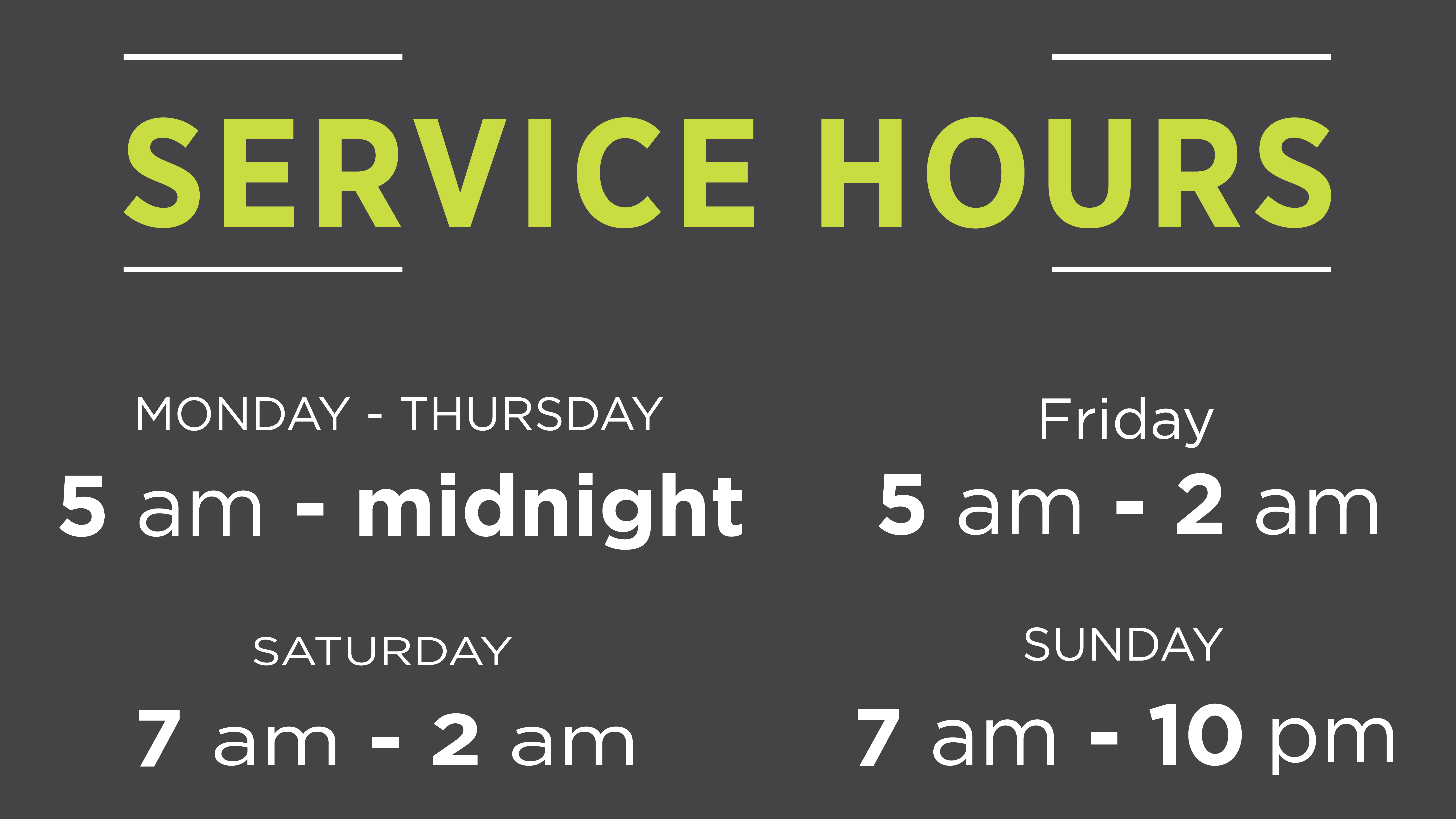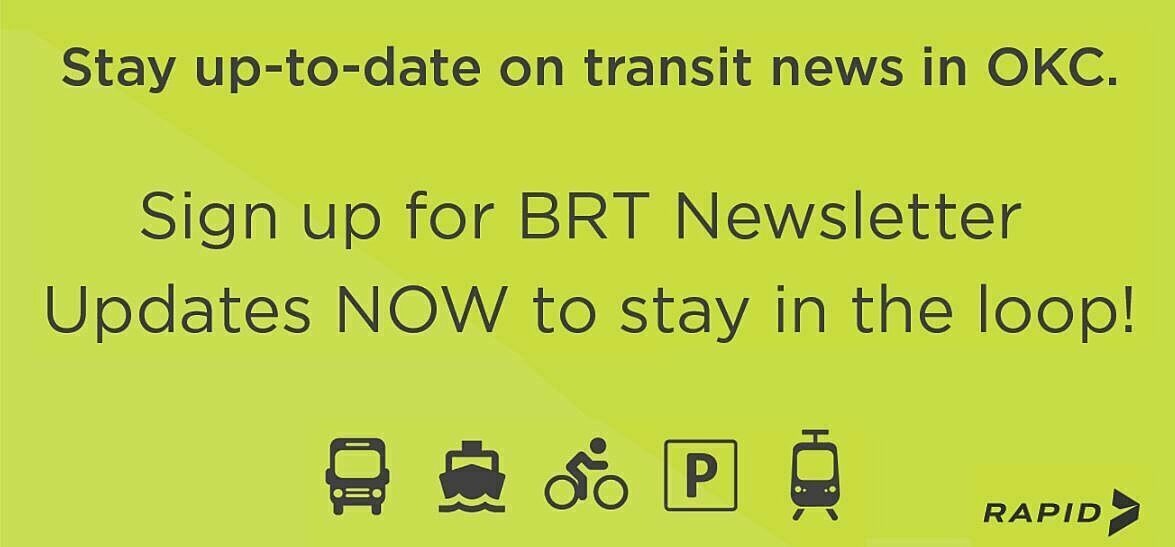2023 RAPID Bus Rapid Transit
The Bus Rapid Transit (BRT) project will be Central Oklahoma’s first BRT line and will provide a premium transit service to Northwest OKC residents through more frequent service with enhanced vehicles, stations and passenger amenities.

RAPID will create a world where people move freely and effortlessly in their everyday lives, building meaningful connections among communities of people, businesses, and destinations. With its hub at the city's core, the long-range vision for the RAPID transit system is to bridge communities throughout Central Oklahoma, easily connecting diverse areas of people and experiences and making an otherwise expansive metropolitan area feel like a cohesive, welcoming neighborhood.

About the NW Line
The first RAPID service line will provide a premium transit service to Oklahoma City (OKC) residents through faster and more frequent service with enhanced vehicles, stations, and passenger amenities. The Northwest line connects downtown Oklahoma City and the Lake Hefner area, serving regional medical centers, commercial centers, the downtown city center, and residents along the Classen Boulevard and Northwest Expressway urban arterials.
The RAPID NW line will be 9.5 miles each way, with 32 stops and priority traffic signals planned for 38 intersections for 9 vehicles. The line will connect with the larger fixed-route bus network, specifically routes 005, 007, 008, 010, and 023, the OKC Streetcar, and Spokies bike share. See the future BRT Route Map (May 2022).
Station Amenities Include:
- Level boarding
- Real-time arrival display
- Ticket kiosk
- Pylon with wayfinding
- Handrails
- Bike rack
- Shelter
- Bench
- Trash receptacle

- ADA Compliant Design: RAPID is accessible to all, and we hope all will want to access it. Wider vehicle doors and level boarding access at every stop for passengers with disabilities or traveling with strollers or carts.
- Lighting: Lighting will be positioned to provide a well-lit, secure boarding area while minimizing impacts to adjacent properties and local neighborhoods.
- Operations: Many aspects of operations such as hours of operations, fare cost, collection, and enforcement, system schedule / frequency are yet to be determined.
- Park & Rides: The Northwest BRT will potentially include two park-and-ride locations. Coordination will be required with both locations. Dedicated striping and signing will indicate park-and-ride customers where to park.
- Transit Signal Priority (TSP): Intelligent traffic systems hold green lights longer for RAPID buses to ensure quick and on-time trips
- Safety: Safety is our #1 priority, and our transit plans show it! Equipped with increased lighting at stations, improved sidewalks and crosswalks, and high-quality transparent shelters increase pedestrian and rider safety and security.
- Vehicles: Customers can expect modern vehicles with wider doors, comfortable interior, and low floor buses, which are powered by low emission impact, CNG (Compressed Natural Gas).

More about BRT
Stay Connected

Who to Contact
Construction Updates
- 06/30/2022 Update
- 07/08/2022 Update
- 07/15/2022 Update
- 07/22/2022 Update
- 07/29/2022 Update
- 08/05/2022 Update
- 08/12/2022 Update
- 08/19/2022 Update
- 08/26/2022 Update
- 09/02/2022 Update
- 09/09/2022 Update
- 09/16/2022 Update
- 09/23/2022 Update
- 09/30/2022 Update
- 10/07/2022 Update
- 10/14/2022 Update
- 10/21/2022 Update
- 10/28/2022 Update
- 11/04/2022 Update
- 11/11/2022 Update
- 11/18/2022 Update
- 12/02/2022 Update
- 12/09/2022 Update
- 12/16/2022 Update
- 12/23/2022 Update
- 12/30/2022 Update
- 01/06/2023 Update
- 01/13/2023 Update
- 01/20/2023 Update
- 01/27/2023 Update
- 02/03/2023 Update
- 02/10/2023 Update
- 02/17/2023 Update
- 02/24/2023 Update
- 03/03/2023 Update
- 03/10/2023 Update
- 03/18/2023 Update
- 03/24/2023 Update
- 03/31/2023 Update
- 04/07/2023 Update
- 04/14/2023 Update
- 04/21/2023 Update
- 04/29/2023 Update
- 05/05/2023 Update
- 05/12/2023 Update
- 05/19/2023 Update
- 05/26/2023 Update
- 06/02/2023 Update
- 06/09/2023 Update
- 06/16/2023 Update
- 06/23/2023 Update
- 06/30/2023 Update
- 07/14/2023 Update
- 07/21/2023 Update
- 07/28/2023 Update
- 08/04/2023 Update
- 08/11/2023 Update
- 08/18/2023 Update
- 08/25/2023 Update
- 09/01/2023 Update
- 09/08/2023 Update
- 09/18/2023 Update
- 09/22/2023 Update
- 09/29/2023 Update
- 10/06/2023 Update
- 10/13/2023 Update
- 10/20/2023 Update
- 10/27/2023 Update
- 11/03/2023 Update
Project Progress Reports
- September 2022 Update #1
- November 2022 Update #2
- February 2023 Update #3
- April 2023 Update #4
- July 2023 Update #5
- August 2023 Update #6
Ribbon Cutting
Newsletter Signup
Search Pages
-
Family of Services
-
About EMBARK
-
Business Center
-
Let's Connect
EMBARK Notifications
Subscribe to receive realtime notifications about your important stops.







